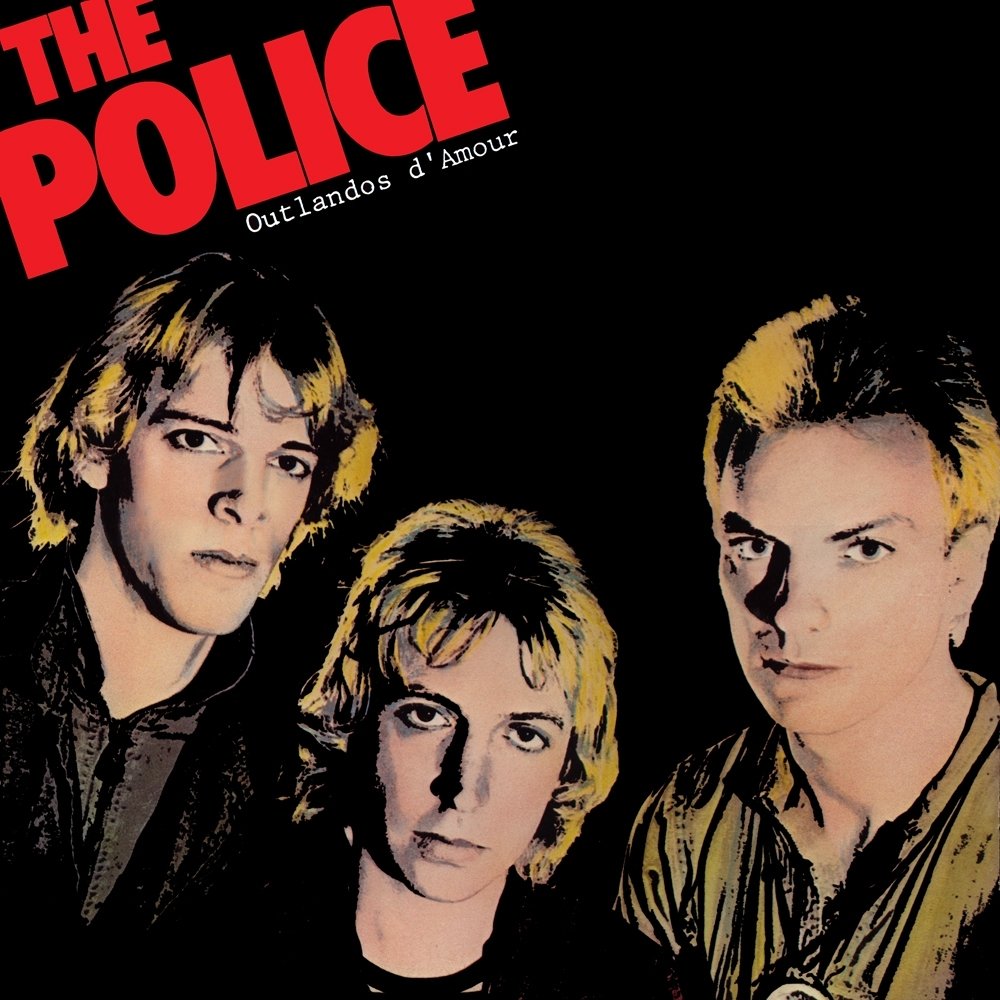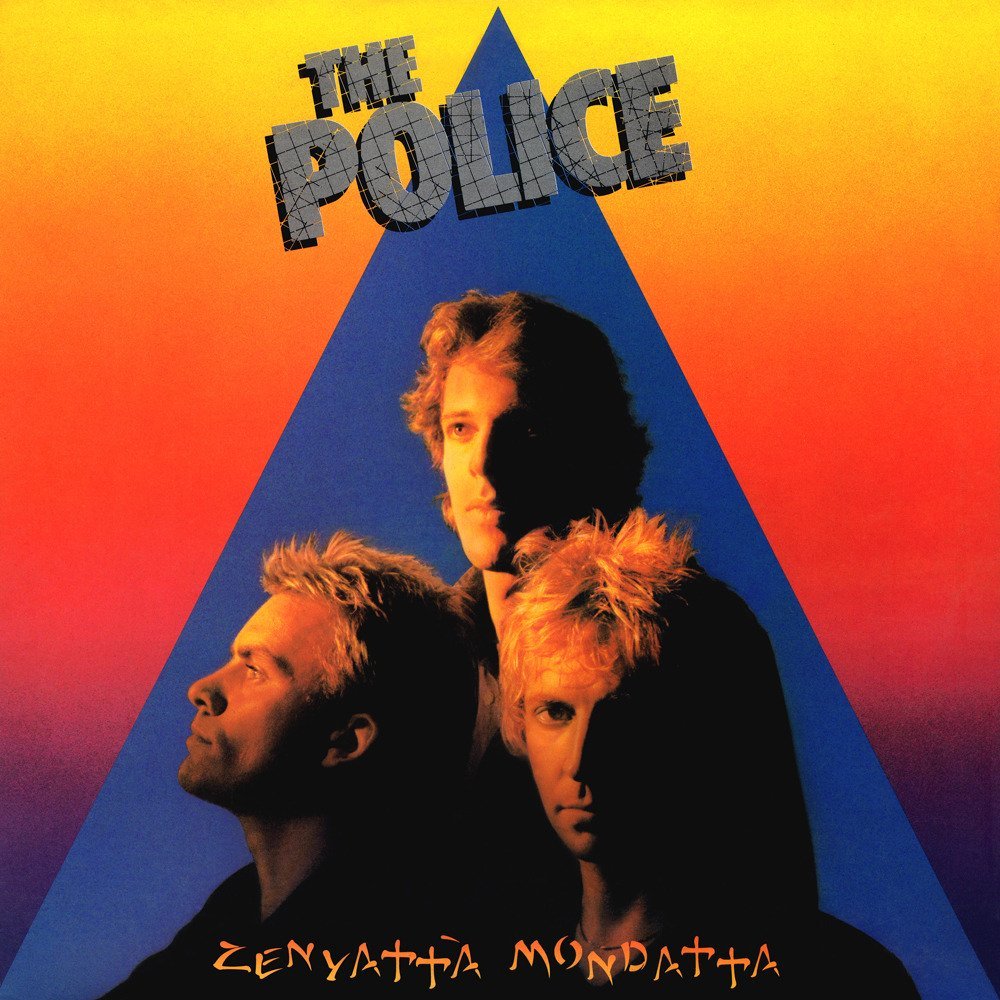Happy 40th Anniversary to The Police’s fifth & final studio album Synchronicity, originally released June 17, 1983.
When you look back on a band’s canon of work you can’t help but wonder if they knew the last album they recorded would actually be their last. Although Sting has retroactively hinted that during the recording of Synchronicity (and the subsequent tour) he knew it was the end of the line for The Police, it’s hard to say how conscious of this he was during the actual recording.
Regardless of whether or not the collective of bassist, singer and chief songwriter Sting, guitarist Andy Summers and drummer Stewart Copeland knew that Synchronicity would be the album that would have them calling it quits, it definitely has the feel of a band trying to end an era with an exclamation point rather than a petered-out period.
With three strong-willed musicians confined to a studio for weeks, you expect some fireworks. But by all reports, the recording of Synchronicity was like cobbling together three solo acts rather than recording a trio. With each musician given their own recording space in George Martin’s AIR Studios (out of the line of sight and interaction of one another), socializing was kept to a bare minimum. Even the subsequent overdubs on the album were reportedly recorded in solo sessions so that band members wouldn’t cross paths.
But for all the personality clashes and overbearing tantrums that took place during the recording of the album, the tumultuous trio managed to deliver their most focused and concentrated album.
Kicking off with bluster, “Synchronicity I” not only introduces us to the idea of destined coincidence and interconnectivity in a heavy nod to Jung, it also introduces us to a new sounding trio. Opening with a hypnotic synth sequence, the song is a fully-fledged rocker. With a taught and terrific Copeland bashing away on the drums, the song propels itself along with vigor. The track is packed to the brim with energy, multilayered vocals and signature Summers atmospherics. Relying less on the reggae influence that had permeated most of the group’s previous works, “Synchronicity I” is a heavy, rocking beast.
Follow up track “Walking In Your Footsteps” tells of humanity blindly walking the path to extinction against a world music inspired percussive groove. Sparse in overall instrumentation, the song creates its misty rainforest atmospherics through a repetitive muted bass line, an array of guitar runs fed through a plethora of effects peddles, and alluring percussive loops. It remains one of the band’s most evocative pieces caught on record.
Watch the Official Videos:
Up next is a trio of tracks that allow each member to take a turn as songwriter. Sting’s “O My God” is a classic outing with a glance back to the sound of previous album Ghost in the Machine with Sting even borrowing a few lines from that album’s breakout hit “Everything Little Thing She Does Is Magic.” Summers’ “Mother” is a paranoid fever dream confessional of Mommy issues embraced by Middle East instrumentation. “Miss Gradenko,” Copeland’s Orwellian offering, is built around his signature drumming style of tom fills and rippling hi-hats and contains one of the album’s catchiest sing-a-long choruses.
Bookending side A is the reflection on the stress inducing modern life that seems stuck on a loop. With the telling of the mental toll modern life is taking on our chief protagonist, “Synchronicity II” also harkens to a rising monster (of the Loch Ness kind) that is making its way into the village. This could be seen as a literal or figurative monster alluding to the pressure and tension our anti-hero has been pushing down.
If side A can be seen as the experimental side of the album, side B is definitely the focused hit making machine, kicking off with the sublime, perfectly crafted pop of “Every Breath You Take.”
Perhaps due to the beautiful guitar melody and simple backbeat, “Every Breath You Take” is seen by many as one of the most romantic songs of a generation. But dig deeper into the lyrical content and the song you’re singing along to with such gusto is a dark, threatening song of an obsessive stalker. Whilst Sting has tried to refashion the song as a commentary on the Big Brother era of Regan, it still can’t shake the creepy ring of a guy in the shadows.
This is the beauty and mastery of Sting as a songwriter, showcasing his ability to weave two opposing themes—romantic/threatening—seamlessly into a global chart topper. As an interesting side note, the uncharacteristic straightforward beat was a bone of contention for Sting and Copeland, with them reportedly coming to blows over it. Who says pop isn’t without its punch-ups?
The dark and ominous “King of Pain” demonstrates the trio’s ability to create mood and atmosphere through sparse arrangements and evocative lyrics. With a glass definitely half full view of life, Sting recounts the feeling of being in endless misery and reflecting this in the world around him, with a “little black spot” as dark as his soul present in even the sunniest of moments. It’s again a nod to Sting’s poetic ability to bring bleak subject matter into a mainstream pop song and have you cheerily sing along to it.
Enjoying this article? Click/tap on the album covers to explore more about The Police:
A seductive look at power plays within an illicit relationship is the subject at hand in “Wrapped Around Your Finger.” With literary references to Homer and Faust, Sting tells the tale of a naïve and inexperienced lover falling for a married woman and through the course of the relationship, turning the tables. Once again the repetitive, sparse arrangement and Copeland’s flourishes and accents add a touch of intrigue and mystery to the track. The song’s musical build echoes the growing power shift in the relationship going from quiet and seductive to strong and dominating.
Sting has often drawn inspiration from books, and “Tea in the Sahara” is another example. Using elements of Paul Bowles’ The Sheltering Sky as the main impetus for the narrative, Sting recounts the tale of three sisters who convince an Arabian Prince to join them for tea, only to be left stranded in the process. Setting the scene with Copeland’s magical hi-hat work, Summers’ ethereal guitar swirls and Sting’s haunting bass run, “Tea in the Sahara” is one of the most underrated Police songs and arguably one of their five greatest tracks overall. It’s moody, mysterious and as the last song on the album, it’s the perfect curtain call and summation of their career.
For cassette and CD pressings, the loungey “Murder By Numbers” was added and feels like a tack-on as a result, taking some of the gloss off the otherwise pristine outing. Originally released as a B-side to “Every Breath You Take,” one feels that it should have remained there.
But in its purest album form, Synchronicity is The Police in the prime of their powers, presenting well-crafted tune after tune for our listening pleasure. It was the album that further skyrocketed them into the musical stratosphere, garnered them GRAMMY Awards and chart-topping success, and ultimately spelt their end. But if a band is going to go out, you’d be hard fought to find a better album to go out on.
Also, if you happen to own an original pressing of the album, pull it out and check the cover. During its initial release there were over 34 variations on the album artwork. Hunt yours out and compare it with the standard issue CD cover. You may be surprised at the little nuances contained therein.
LISTEN:
Editor's note: this anniversary tribute was originally published in 2018 and has since been edited for accuracy and timeliness.



